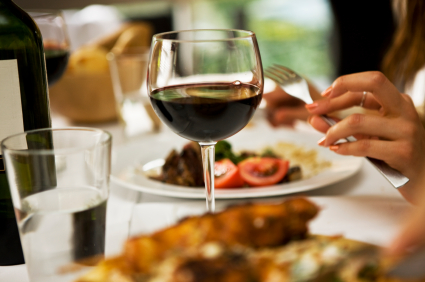Put simply, the Sonoma diet is an evolution or rehashing of the Mediterranean diet, which is known for its “casual” style that includes leniency for things like (moderate consumption of) alcohol and occasional red meat. The Sonoma diet focuses more on phytonutrients, micronutrients, and antioxidants as the basis for healthy eating, but seeks to retain the same Epicurean spirit. There is no calorie counting with the Sonoma diet; instead plate sizes are used to regulate food intake.
Sonoma diet recipes generally focus around 10 foods that inventor Dr. Connie Gutterson has chosen because of their bold flavors and nutritional content. Dr. Guttersen has her doctoral degree in nutrition and serves as a dietary consultant for many Fortune 500 companies. The 10 superfoods she lists as such are as follows: whole grains, almonds, bell peppers, tomatoes, broccoli, grapes, spinach, blueberries, strawberries and olive oil.
In the following blog post we’ll review the Sonoma diet, including the stages/waves of the plan, and the pros and cons associated with it.
Sonoma Diet Plan
Sonoma Diet Wave 1 — Like the Atkins Diet, the Zone Diet, or the South Beach Diet, the Sonoma diet proceeds through 3 stages; under Gutterson’s system these are referred to as “waves.” The first wave is one is the most demanding, as there are the most restrictions with regards to what is allowed to be eaten, and the amounts. The food eaten during the first wave must be wholesome and unprocessed, in addition, the stage sugar intake at this stage is greatly reduced.
Sonoma Diet Wave 2 — The next wave includes more of a variety of food which are allowed, and weight loss slows to a more gradual pace. Wave two continues until the target weight for the individual is reached, at which point Wave 3 commences…
Sonoma Diet Wave 3 — This wave is known as the “maintenance” stage, and is arguably the most fun, once arrived at. It allows for the widest selection of food, including a glass of wine daily.
The Pros and Cons of the Sonoma Diet
Pros
Rave Reviews — The Sonoma diet has received positive reviews from many nutritionists, appearing in publications such as More, Women’s World, First Magazine, The Chicago Tribune, and Oprah Winfrey’s “O” (to name a few.) The diet is an acclaimed way to lower high blood pressure, blood sugar levels, and promote a fairly reasonable degree of healthy living.
Savor the flavor —The definitive aspect to the diet is that it emphasizes the things that you can eat over the things that you cannot. Gutterson wants people to worry less about the exact number of calories, and more about savoring what is on the plate. The Sonoma diet is known for its big flavors that don’t appear to compromise much in the way of nutrition.
Count Diameter Not Calories — The serving sizes are smaller, but achieved through reducing the size of the plate (7 inches for breakfast, and 9 inches for dinner) rather than issuing any hard-and-fast counts. The Sonoma diet is perfect for someone who wants to diet without feeling like they are on a diet. In short, it is about food enjoyment over food deprivation.
The Cons
How Low Can your Calorie Count Go? — As a diet which purports itself as something other than a low-calorie diet, some nutritionists have pointed out that that some of the wave 1 menus are supplying in the range of 900-1000 calories for women, and 1100-1300 for men, with only 200-300 more calories in wave 2. For many people this is not going to be enough, and they will fall into a ravenous state if they are the type of person who is reasonably active.
Can I Have My Vegetables on Another Plate? — Because the plate sizes are so limiting, the Sonoma diet works on limiting volume; and eating low-starch, high fiber vegetables is is usually something that is best done in quantity. For example, a cup of cooked spinach fills up half of a nine inch plate. Either Dr. Gutterson has it mind to pile your plate into the sky, or the vegetable serving sizes are an unintended consequence of her overall approach.
“Carb Crash” — Carbohydrate crash is pretty common in low-carbohydrate diets, but since the Sonoma diet doesn’t really claim to be low-carbohydrate it likewise has no method for dealing with the subsequent crash. The diet constantly criticizes low-carbohydrate diets, yet carbohydrate levels in the Sonoma diet are on par with other low-carbohydrate diets out there.



